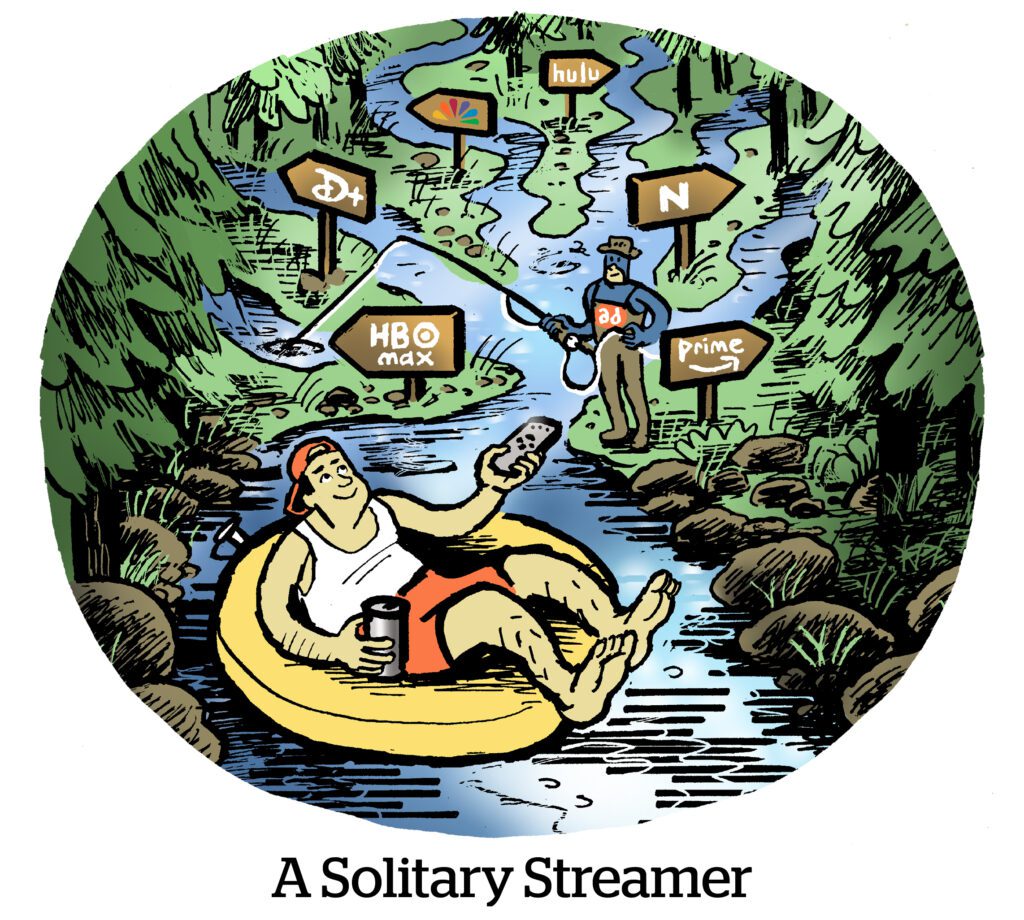Here’s today’s AdExchanger.com news round-up… Want it by email? Sign up here.
Tubi Or Not Tubi
Fox-owned Tubi recently made its first ping on Nielsen’s radar with 1% of US TV viewership – just in time for Tubi’s first-ever advertiser conference ahead of upfront season on Thursday, where it showcased glitzy new data partnerships.
And on the measurement front, Tubi integrated VideoAmp this week for audience planning and forecasting, and it added Comscore to its list of audience measurement providers.
But Tubi isn’t the only programmer placing bets in the measurement race. Warner Bros. Discovery just named VideoAmp and Comscore as its alt currency partners for this year’s upfronts.
Back to Tubi, though, what’s a pre-upfront conference without talking about identity solutions?
Tubi announced an integration with LiveRamp’s RampID audience graph to create addressable audience segments. The new identity suite à la LiveRamp bolsters Tubi’s existing integration with The Trade Desk’s UID 2.0 program.
And the broadcast ad tech partner wave is still cresting. Disney just synced up with LiveRamp and Experian, a year after tying the knot on its own UID 2.0 integration, while Comcast-owned FreeWheel launched an identity-matching program last year with Merkle, TransUnion, LiveRamp and Experian.
Out Of Funds
Creator funds are a poor way for social networks to develop strong creator businesses.
Funds are often awarded arbitrarily, so creators don’t have forecastable businesses (unlike YouTube, which offers an ad rev share). Also, as social platforms grow, their creator funds become more and more marginal, like income stagnating while inflation takes off.
As Sean Kim, TikTok’s former US head of product recently said at SXSW, there is no guarantee a creator fund is even paid out, writes media reporter Simon Owens at his Substack.
For example, TikTok announced a $2 billion fund to great fanfare in 2020. But, as Kim pointed out, “Who’s actually checking if we paid $2 billion? Nobody. Nobody could check.”
The problem isn’t just TikTok. Last year, Spotify announced a $100 million “creator equity fund” to mollify subscribers after Joe Rogan made some racist remarks. Only $10 million has been distributed.
“Without meaningful revenue sharing, no company is safe from losing its star talent,” Owens writes, “especially when better monetization platforms are just a click away.”
99 Problems
And now, moving on to another Substack – actually, Substack’s Substack – let us demonstrate why you should always test assumptions.
Product Lab, the newsletter sent out by Substack’s product team about data-driven development, published a summary of a test that found that knocking one cent off the subscription price ($9.99, rather than the flat $10, say) is actually a drag on sign-ups. [h/t to @Gergely Orosz for the spot since it’s a private newsletter.]
“This isn’t the first time we’ve been surprised by the purchase behavior on Substack,” writes Reid DeRamus, Substack’s growth PM.
Value-based subscriptions (Netflix, Disney+ and Amazon Prime, for instance) have $X.99 pricing, which suggests a bargain, whereas round pricing can imply quality. McDonald’s burgers are $X.99. A fancy restaurant would never.
Publishers with subscription businesses need to strike a balance. Substack writers are independent, individual writers, and charging at a bargain-implied rate of $X.99 may backfire. Netflix and the big streaming services, meanwhile, clearly embrace the cent off, but are also fighting for that wallet space.
The New York Times has round subscription pricing, while USA Today prefers the $X.99. To each their own.
But Wait, There’s More!
Lush Cosmetics plans to cut one-third of its ad spending across the five Big Tech companies over philosophical and brand control issues. [Marketing Brew]
Snap launches an enterprise division to help businesses build AR features. [Reuters]
The FTC wants to make it easier for consumers to cancel free trials and subscriptions. [CNN]
Recent bank collapses caused ripple effects across the digital advertising industry. [Adweek]
Terry Kawaja explains why he invested in Possible, a new tech conference organized by Dmexco’s founder, Christian Muche. [Digiday]
You’re Hired!
CHEQ brings on Amy Holtzman as CMO and Marc Jacobs as CRO. [release]
OpenWeb announces the promotion of CFO Haim Sasson to president. [release]













